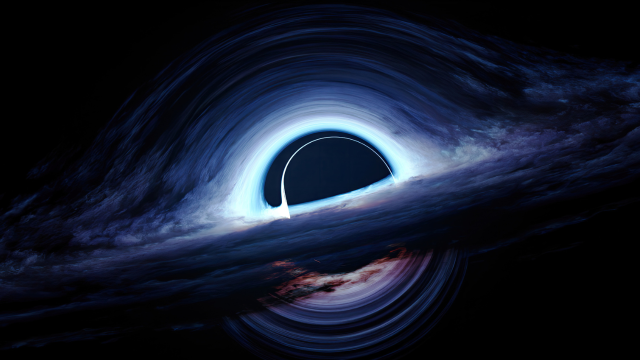In the grand orchestra of the cosmos, a powerful gravitational wave observatory recently captured a discordant note – ripples in the fabric of spacetime hinting at a violent collision.
Scientists believe it was a celestial dance of destruction, a neutron star, the collapsed core of a massive star, meeting its demise at the maw of an unknown object.

Neutron Stars: Nature’s Densest Bruisers
Imagine a celestial object so dense that a teaspoon of its material would weigh more than all the cars on Earth. That’s a neutron star, a leftover behemoth born from the fiery death of a giant star. Packed with unimaginable pressure, neutron stars are the densest objects in the observable universe, surpassed only by their enigmatic cousins – black holes. Their immense gravity is a testament to the raw power of stellar evolution, a force capable of crushing atoms into a sea of neutrons.
A Stellar Tango Turns Cataclysmic
These stellar remnants aren’t solitary creatures. They waltz across the cosmos, sometimes encountering a fateful dance partner. In 2021, scientists witnessed the first confirmed collision of a neutron star and a black hole. This latest discovery echoes a similar cosmic tango, with a twist. One object, likely a neutron star, locked in a gravitational embrace with a mystery partner, estimated to be 2.5 to 4.5 times the mass of our Sun. The immense gravitational forces at play during such a collision would unleash a phenomenal burst of energy, potentially radiating across the electromagnetic spectrum and sending ripples through spacetime itself.
The Intriguing Enigma: A Black Hole or Something New?
The object’s mass is the crux of the mystery. It’s too hefty to be a neutron star, but not quite massive enough to be classified as a black hole – residing in a fascinating astronomical no man’s land known as the “mass gap.” This has piqued the curiosity of scientists, who suspect the culprit might be a pint-sized black hole, a black hole on the lighter side. But the possibility of encountering a new type of celestial object, something not yet predicted by our current understanding of physics, is equally tantalizing.
Unveiling the Secrets of the Cosmos
The ripples, dubbed GW230529, traveled a staggering 650 million light-years before reaching Earth’s detectors. This cosmic echo offers a chance to study the behavior of these celestial heavyweights and the exotic physics at play during such mergers. Further analysis, including the potential detection of electromagnetic counterparts by telescopes, will help determine the true nature of the mystery object. Is it a missing link between neutron stars and black holes, or something entirely new to our scientific understanding?
A Gateway to a More Dynamic Universe
This discovery isn’t just about a single event. It suggests that collisions between neutron stars and these intriguing “mass-gap objects” might be more frequent than previously thought. As the LIGO-Virgo-KAGRA collaboration resumes its observations, the prospect of hundreds more gravitational wave detections looms large. These observations promise to unveil a more dynamic universe, teeming with unseen celestial dramas and offering a glimpse into the violent ballet of stellar evolution. The symphony of spacetime is playing a new tune, and astronomers are eagerly deciphering its notes.
The future of gravitational wave astronomy is bright. With space-based observatories like LISA on the horizon, scientists hope to pierce the veil even further.
These observatories, free from the noise of Earth’s atmosphere, will listen to the silent symphony of the cosmos with unprecedented sensitivity, unraveling the secrets of these enigmatic celestial encounters and rewriting our understanding of the universe’s most violent and awe-inspiring events.



















